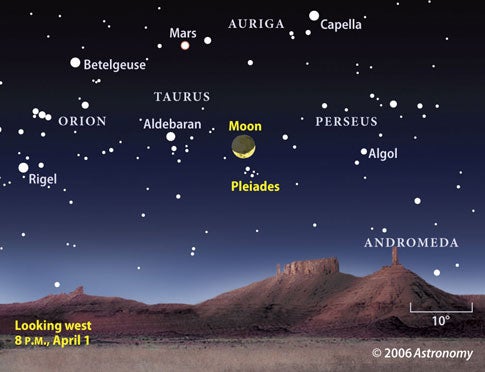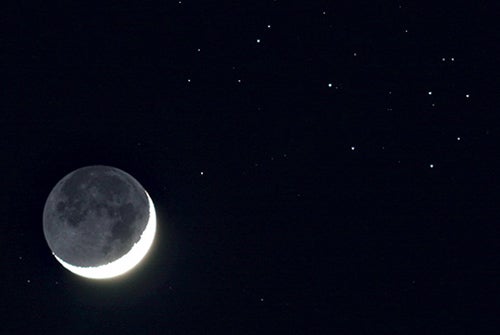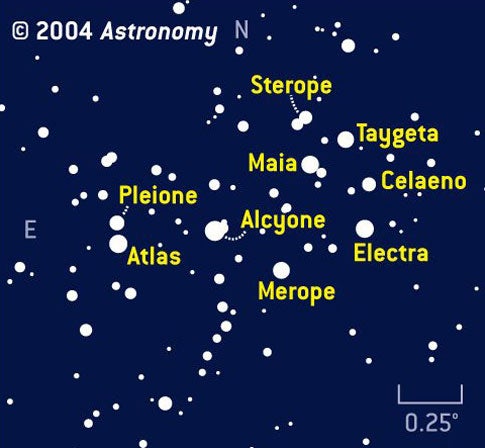March 30, 2006
April begins with a splendid sight — a slender crescent Moon passing by the Pleiades star cluster just after sunset. This beautiful pairing is no joke! The evening of April 1 will see the “old Moon in the young Moon’s arms,” a sliver of white moonlight hugging a pale gray disk, in the western sky about 45 minutes after sunset.
April begins with a splendid sight — a slender crescent Moon passing by the Pleiades star cluster just after sunset. This beautiful pairing is no joke! The evening of April 1 will see the “old Moon in the young Moon’s arms,” a sliver of white moonlight hugging a pale gray disk, in the western sky about 45 minutes after sunset.
The best view comes from the East Coast. If you have some time, watch as our satellite covers the stars one by one. By the time the Sun sets in California, the Moon will have moved past the star cluster and lie to its upper left. The view will still be great, so break out your binoculars for a closer look.
The Pleiades, also called the Seven Sisters, is one of the most famous and easily recognizable star clusters. This open cluster lies in the constellation Taurus the Bull and contains nearly 3,000 stars, although only 6 are visible to the naked eye. It’s the brightest open cluster we can see from Earth, and the closest at approximately 440 light-years away.
Telescopes and giant binoculars will show gas clouds surrounding the stars, but the nebulosity is unrelated to the star cluster. The stars are simply moving through two interacting clouds in a unique three-way collision. Strong stellar winds sculpt the clouds, which reflect the starlight in a soft blue glow.
The nine named stars in the cluster represent Atlas and Pleione in Greek mythology and their seven daughters: Alcyone, Merope, Celaeno, Taygeta, Sterope, Electra, and Maia. The giant Orion fell in love with the girls, who rebuffed his advances. Zeus protected the sisters by turning them into doves, which flew to heaven.












